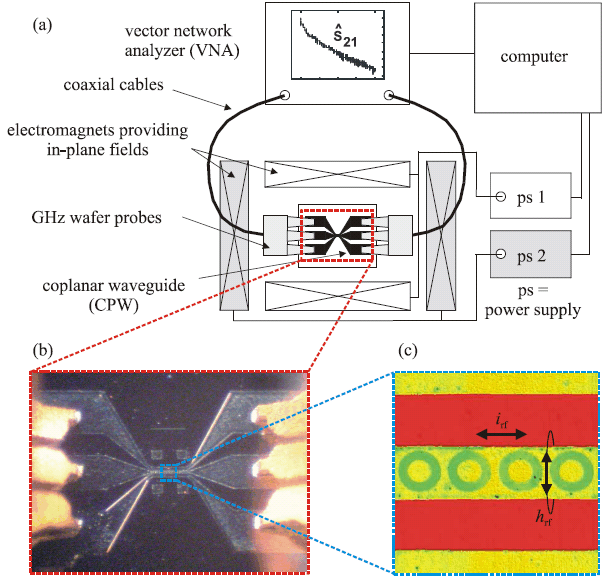To explore collective spin excitations in nanostructured ferromagnets we make use of an all-electrical approach. Using optimized coplanar waveguides (CPWs) and a vector network analyzer (VNA) we have set up a broadband spin wave spectrometer. It covers the frequency range from some 10 MHz up to 26 GHz. The CPW provides, both, the microwave field excitation of the nanomagnets' spins and the detection of spin waves. The detected voltage is induced by the precessing spins. The magnets are either monolithically integrated to the CPW or mounted in a flip-chip configuration. The CPW containing the nanomagnets is located between current-carrying coils which generate a dc magnetic field. By this means, we control the magnetic history and the magnetic configuration. If the inner conductor of the CPW is tapered down to the 1 Ám scale the sensitivity increases such that the spin excitation of a single Permalloy micromagnet can be studied. The broad frequency range allows us to study spin-wave excitations (i) in a wide range of magnetic fields, (ii) in different materials, (iii) for different magnetic configurations of one and the same sample and (iv) to follow the magnetic field dispersion of excitations. The latter enables us to classify spin-wave excitations and to understand in detail the microscopic origin. Experimental data are interpreted using micromagnetic simulations and Fourier transform imaging.
 |
(a) Sketch of the all-electrical setup for broadband spin-wave spectroscopy. (b) Micrograph of a CPW on a dielectric substrate. GHz probes are used for connection between VNA and CPW. (c) Colorful atomic force micrograph of the CPW's central region: red - substrate, yellow - CPW, green - Permalloy rigs of an outer diameter of 2 Ám. The CPW consists of an inner conductor (signal line), accommodating the rings, and two neighboring ground lines. The microwave current supplied by the VNA excites the spins through the oscillating magnetic field which surrounds the inner conductor. |
For time-resolved measurements we replace the input detector and output source of the VNA by a sampling oscilloscope and a voltage pulse generator, respectively. Currently, we reach a bandwidth of 30 GHz.